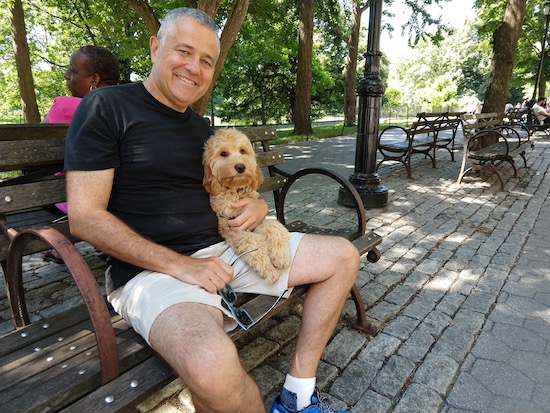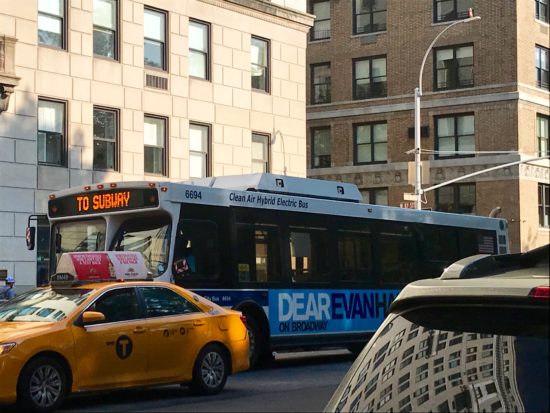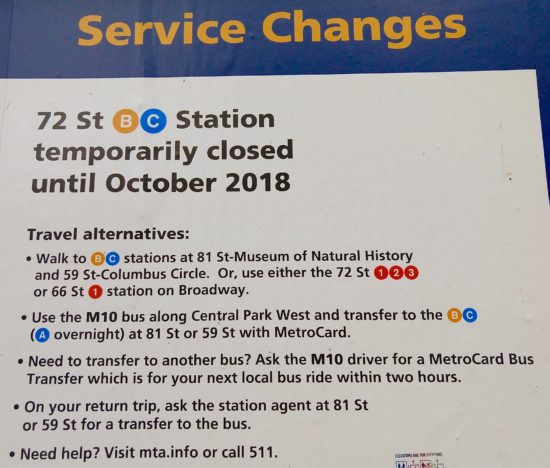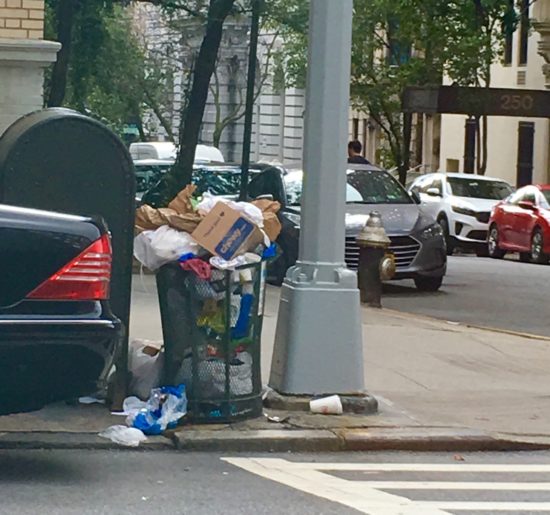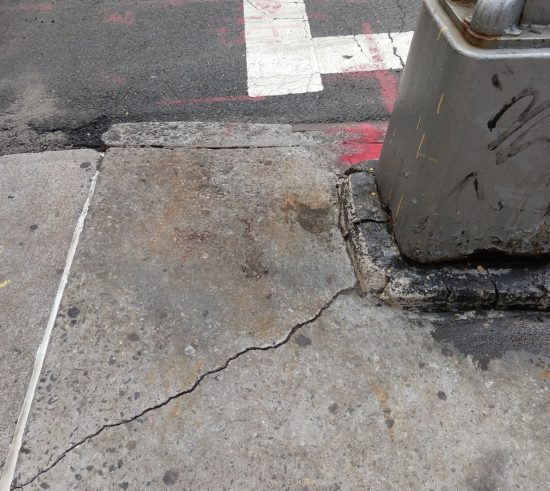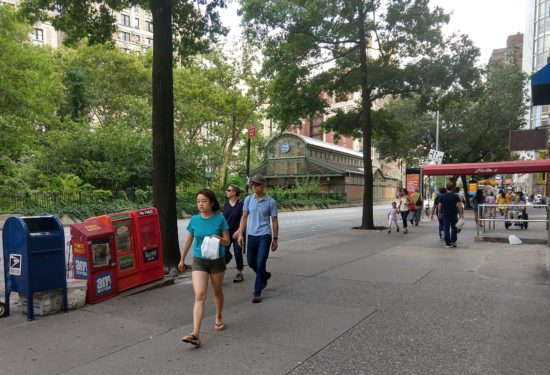 |
| Quindlen on her UWS rooftop. Photo (c) Maria Krovatin |
Originally published September, 24 2018, in West Side Rag
Stepping into Pier 72
diner, Anna Quindlen seems much like any other work-from-home writer on break.
Eager for news, a laugh, some rice pudding with the decaf. Most of the day, she
says, “I just sit and stare into the middle distance.”
Her résumé says
otherwise. After working as a journalist and winning the Pulitzer Prize for
her New York Times columns, Quindlen moved on to writing
bestsellers, from memoirs to advice books to nine novels.
Her latest, Alternate Side, is set on a dead-end
block on the Upper West Side, one with a tiny private parking lot that’s an
enduring source of pride for those granted a space, and envy for those
relegated to New York’s insane automotive dance. A block quite like the one
where Quindlen lives with her husband, attorney Gerald Krovatin, and two
Labrador retrievers. The couple has three grown children, one grandchild and
another on the way.
Quindlen spent a recent
hour talking about the novel, the fault lines running through many UWS lives
and why nothing beats Broadway’s “great parade of humanity.” This interview has
been edited for length and clarity.
*
WSR: Alternate
Side digs into so many issues that obsess Upper West Siders – class,
status anxiety, real estate, gentrification. What sparked the story?
AQ: The initial
impulse for the novel came because my elder son was reading Bonfire of
the Vanities. It made me think how long it’s been since Tom Wolfe published
that book. And how issues of race and class attach. Not only in this city but
across this country. Now perhaps more than ever.
So I was a little
surprised to discover what it turned out to be was a novel about marriage.
WSR: Your 50-ish
protagonist, Nora Nolan, and her husband, Charlie, feel so familiar.
AQ: I think of
them as classic, prosperous Upper West Siders. Wealthy people live on 5th
or Park or down in Tribeca. Prosperous people live on the Upper West Side.
WSR: Changing
perspectives hit Nora from multiple angles. She’s conflicted about her
relationship with her marriage and with her city.
AQ: And with
herself. It’s not accidental that she has a completely different work life at
the end of the book as she has at the beginning. She changes substantially. In
ways that I’m not sure would be true, had the incident with the golf club not
happened.
WSR: That incident
– an assault on a blue-collar man by a white-collar one – divides the block,
upending peaceful coexistences. Do you think one incident can change how you
see someone you’ve been with for 25 years?
AQ: I don’t think
the single thing changes it. I think sometimes something cataclysmic can magnify
the differences that you unconsciously knew were there but refused to look at
or acknowledge. You see it when empty nest syndrome happens…when serious
illness strikes.
It’s not so much that
that thing caused the schism. It’s that there were tiny cracks all along and
that thing is like a teaspoon hit against the side of the vessel. Suddenly all
the tiny cracks get bigger.
WSR: Nora also has
shifting feelings about New York.
AQ: What Nora says
over and over is that she felt more of an affinity for New York – and certainly
her neighborhood – when it was grittier, harsher, harder. That it felt like
someplace that was challenging her. Now she feels really settled in it. In a
way that you’re not really supposed to feel in this city. You’re supposed to feel
settled in the suburbs, not on Broadway.
WSR: Do you feel
the same way?
AQ: I have a
certain fondness for the grittier, crazier Upper West Side that existed when I
came to college here. And when I was a street reporter here. But as a mother?
As a property owner? I’m not so unhappy with things feeling slightly safer and
more settled.
What I am unhappy about
is when younger people and less prosperous people get pushed out.
The great thing about
the Upper West Side is you walk up Broadway and feel like you’re seeing the
great parade of humanity. You’re not just seeing people who can afford a pair
of Jimmy Choos.
But fewer members of the
great parade are welcome here or are prosperous enough to settle here now. I’m
a big fan of rent control!
WSR: Speaking of
divisive issues…class and its power dynamics run thru Alternate Side.
Among prosperous Upper West Siders, I’ve sometimes sensed this crisis of
masculinity and of femininity, when folks interact with their contractor or
their super or their nanny. A person who enters their lives and has much
more power than they expected.
AQ: It’s certainly
a major theme of the book. The people who are performing the tasks that – deep
in your heart of hearts – you believe you should be doing yourself.
I don’t think it’s quite
as strong among the men. But among the women, certainly I get a really powerful
sense of that. Whether it’s the nanny or the housekeeper – that person upon
whom you are so reliant, and who therefore has a kind of power that can make
you uncomfortable.
The woman who might know
things about your children that you don’t know. Who knows where everything is
in your house. It doesn’t have to be uncomfortable, but it can be.
WSR: The denizens
of Alternate Side’s block have some sharp personalities. Do you
think there are particular character traits shared by Upper West Siders?
AQ: I think of us
as liberal, outspoken, nicer than people think we are. People can be really,
really helpful to each other. Cliquish and clannish, too.
WSR: How so?
AQ: You just have
this tightly woven tapestry of the neighborhood people. They’re your nabes.
Maybe they’re not even people you know. But they are people you see almost
every day. You know their dogs. They go to the same nail parlor. A few you
know, but most you don’t – except by sight.
WSR: But they’re
still your people.
AQ: Definitely
your people. Suddenly, you notice when they’re not there anymore.
WSR: After growing
up in Philly and South Brunswick, New Jersey, you first came to the upper Upper
West Side – Morningside Heights – at 18?
AQ: Came to
Barnard in 1970. And I would’ve stayed around here. But my husband and I got
married and didn’t have much money. So we looked around for the place most like
the Upper West Side, one where you could get cheap housing. And moved to
Hoboken. I tended to think of the Hudson River as nonexistent.
In 1999, we moved back.
Right after Oprah chose Black and Blue as an Oprah Book Club
book. Which was not coincidental.
WSR: Ah,
windfalls…
AQ: And we were
both horrified, because we were convinced we were buying at the top of the
market. Only to discover that the market had no top!
WSR: 19 years,
then. A lot has changed…
AQ: It changes in
some ways, and in other ways it doesn’t.
WSR: What are the
eternals?
AQ: Well, you walk
past a place like Barney Greengrass and you think, by right, this should be an
Armani Exchange. And yet, somehow, it’s not.
There’s this weird
alchemy to the Upper West Side. Some places really stick. I’m convinced that if
there was a nuclear disaster, Cafe Luxembourg would survive. And thank God for
that.
WSR: What’s your
favorite part of the neighborhood? Beyond our spunky spiritedness…
AQ: That is one of
my favorite things. That odd combination of friendliness and non-intrusiveness.
The neighbors who know how to say just enough, but not too much.
And Riverside Park. Poor
Riverside Park! In any other city in America, it would be THE park. But because
of Central Park, it gets overlooked. I’m a real Riverside Park devotee.
My grandson’s favorite
place on earth – other than Nana & Pop’s house – is the American Museum of
Natural History. Which is just as it should be.
WSR: In A
Short Guide to a Happy Life, you summarize your personal code as, “I show
up, I listen. I try to laugh.”
AQ: My work makes
me sound so much more large and in charge than I actually am.
WSR: You’re
so together!
AQ: I’m baffled by
it. I read a quote from myself on Twitter and I think, did I actually ever say
or write that?
When my kids were really
young, and I’d be going to give a speech or something, I’d come downstairs in a
dress and heels and make-up. My son would say, “It’s the Amazing Anna Quindlen
Doll!” And most of the time when I have to talk about my work, or look at
my work, or think about what I’ve produced in my work, I feel like the Amazing
Anna Quindlen Doll.
And that is NOT the
person who populates the streets of the Upper West Side every day!
WSR: Ha! Alternate
Side’s paperback is out in November. What’s next for you?
AQ: Nanaville will
be published in the spring. It’s thoughts on grandmothering from a newbie nana.
-->






